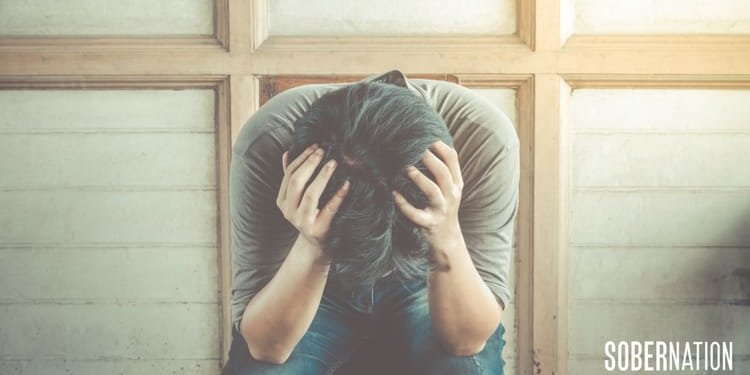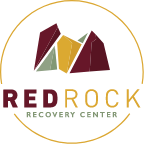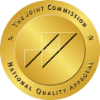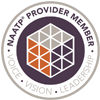Reinforced Use
Conceptually, this craving type is the easiest to understand. When substances are introduced into the body in any amount, this craving takes hold and demands more of the same, no matter how damaging. When 12-step literature mentions the word “craving”, this is the type they are referring to (and none of the others). In treatment, we encourage total abstinence to avoid this type of craving. It’s that simple: once a person has ceased the use of substances, they will never again experience this type of craving.
Overt Interoceptive
The next type of craving occurs once substance use is ceased. Dr. Earley describes it as overt because the client experiences the craving directly, and he describes it as interoceptive because it is triggered by sensations in the body that typically preceded substance use. In the case of the cocaine user, they report symptoms of sweaty palms, dry mouth, and gastrointestinal urgency. When these symptoms combine with normal anxiety, they have a thought: I want to use. These types of cravings are a normal occurrence in residential treatment; in fact, they are the reason that residential treatment exists.
When they occur, treatment staff help the client through them by going through a set of steps. First, they ask the client what was going on inside their body and emotionally just before the realized they were craving. Next, the client is asked to catalog those sensations as craving triggers for future reference. Last, the client is asked to briefly describe the craving to the therapy group or a supportive friend, stopping short of what they would do if they had alcohol or other drugs. The client must block them from romanticizing.
During the period of overt interoceptive cravings which usually lasts 7-28 days, clients report two things that must be addressed in the treatment setting: romanticizing and using dreams.
Dr. Earley describes romanticizing as “a self-induced elaboration in which drug use is seen as a positive experience, a grand adventure”. Memories of past drug use can trigger the brain to release small amounts of neurotransmitters into the same area of the brain where alcohol and other drugs do their work. When romanticizing begins, several others may join the conversation and before long, everyone is craving! I ask clients this question: Where on the property does romancing occur the most? The response is “the smoking area”. Why is that? I believe the primary reason why I get this response repeatedly is there are usually no staff members around to confront or comment on it. If clients were to start romancing in the group therapy setting, it would be shut down.
Using dreams are an important feature of overt interoceptive cravings because of the visceral nature where the client often feels all the euphoria from their substance during the dream. Not everyone will have using dreams. They describe waking up in a panic, for fear that they relapsed and their urine will test positive the following day. It usually takes a few minutes for them to calm down and realize it was just a dream. Most are able to get back to sleep, but some will be up for the night. A second response is more sinister; “I wish I could go back to sleep and get high again.” The most important thing is to bring them to the therapy group and discuss them. This helps with processing those events and can greatly reduce the associated cravings.
Conditioned Cue Craving
In the case of the opiate user who enters withdrawal, they describe feeling “flu-like symptoms”, ie a runny nose, nausea, vomiting, long bone pain, etc. The first time they get a cold in early recovery, they get triggered to return to using opiates. Why? Because in the past, these symptoms were completely extinguished by the use of opiates.
I feel there is a specific skill set involved in intentionally placing myself in a high-risk situation in early recovery. It sounds something like this:
First, the risk involved has to be determined; is it low, moderate or high If it is determined to be high risk, the following is a good place to start:
-
- First, I have to decide if intentionally placing myself in a high-risk environment in early recovery is in my best interest (see below: “As Bill Sees It” page 280). Am I spiritually fit? This answer can only come from the individual, but others including sponsor, therapist and peers can assist. I would recommend she discuss the trip in a group. If she consistently hears that this is an ill-advised trip and is going anyway, that should let her know where her spiritual fitness is.
- If the answer is “Yes, I am going (usually regardless of the spiritual fitness question)”, what safeguards can I put in place? Things like an escape plan, truly listening to that inner voice that says “it’s time to leave” and having a friend along with me that I can trust will remain abstinent. In Joan’s case, I would recommend that she consider taking Antabuse or setting up random UDS testing while she is gone. Maybe a contract with her boyfriend that he will remove all the alcohol from his home, promise not to drink while she is there and if she does drink she gets on a plane and returns to Atlanta that day.
- Most of the time, clients can resist for a time while in a high-risk environment. The real risk is the emotional hangover that results from having to “be on their toes” for such an extended time. This can leave them vulnerable to a relapse in the days and weeks after the event from the residual stress.
- I use the analogy of a bank account: each time I do something for my recovery (like go to a meeting, talk to my sponsor, complete a step, attend therapy or IOP, change my eating habits, begin exercising, take my medicine and notice a mood change, etc), I make a small deposit into my recovery account. Slowly over time, the balance grows, but when I go into a high-risk environment, a large withdrawal is made. If there aren’t enough funds in the account, it overdraws and I either relapse or suffer an emotional hangover. In determining her spiritual fitness for a trip like this, it could be helpful for her to highlight what she’s been doing for her recovery to see where her balance is. From the group I had with her on Tues, it doesn’t appear like she’s been doing much other than coming to IOP.
The more Joan practices this skill set, the better she will get at it. After a time, the skill becomes muscle memory or instinct; I no longer have to actively think through it, I just inherently know it (promise: We will intuitively know how to handle situations that used to baffle us).
“Assuming we are spiritually fit, we can do all sorts of things alcoholics are not supposed to do. People have said we must not go where liquor is served; we must not have it in our homes; we must shun friends who drink; we must avoid moving pictures which show drinking scenes; we must not go into bars; our friends must hide their bottles if we go to their houses; we mustn’t think or be reminded about alcohol at all. Our experience shows that this is not necessarily so.
We meet these conditions every day. An alcoholic who cannot meet them still has an alcoholic mind; there is something the matter with his spiritual status. His only chance for sobriety would be some place like the Greenland icecap, and even there an Eskimo might turn up with a bottle of Scotch and ruin everything!”
Original Article re-printed here with permission from SoberNation.com
Red Rock Recovery Center is a Colorado state licensed substance abuse extended care treatment program designed to help you or your loved one recover from the struggles associated with alcoholism and drug addiction. Located in Denver, Colorado we offer a safe haven for those afflicted by the ravages of untreated addiction. Our program is based on a compassionate 12-step model that applies behavioral as well as life skill therapies, which will enable our clients to heal and recover.
#recovery #drugrehab #redrockrecovery




